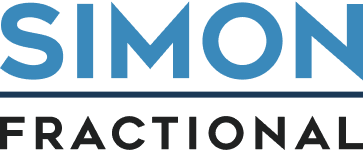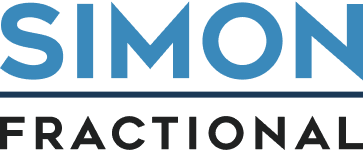In today’s capital-constrained SaaS environment, every dollar must prove its worth. According to Gartner, 75% of B2B SaaS companies have reported making budget cuts in the past year, with marketing often among the first departments to feel the pressure. Yet growth expectations remain sky-high. Founders are left asking: How do we reduce spending without sacrificing momentum?
Enter the Fractional CMO. For high-growth startups and mid-stage SaaS firms, a seasoned marketing leader on a part-time basis can provide the strategic horsepower of a full-time hire at a fraction of the cost, all while building a foundation for scalable, efficient growth.
This blog explores how Fractional CMOs simultaneously deliver cost savings and growth, and why they’re increasingly seen as a smarter alternative to hiring full-time.
The Real Cost of Hiring Full-Time Marketing Leadership
Hiring a full-time CMO isn’t just expensive—it’s often out of reach for early-stage or Series A companies. According to Glassdoor and Built In, the average CMO salary ranges from $180,000 to $300,000+ annually, excluding bonuses, equity, and benefits. That’s a major investment for any SaaS firm that is still proving product-market fit or optimizing its go-to-market (GTM) strategy.
Fractional CMOs, by contrast, typically cost between $5,000 and $15,000 per month, depending on the scope, specialization, and involvement. That’s 60–70% less than a full-time hire, with zero long-term headcount risk.
Common founder challenge: Many B2B SaaS leaders spend 6–8 months searching for the “perfect” marketing hire, only to onboard someone who either skews too tactical or too disconnected from execution.
But it’s not just about salary. A full-time executive also requires onboarding time, long-term equity packages, and potential severance if the hire doesn’t work out. It’s a high-stakes commitment in a market that rewards flexibility.
Even when that hire is in place, performance can be hindered by a lack of foundational strategy. Without strong GTM alignment, many CMOs—regardless of talent—end up stuck putting out fires instead of driving forward.
5 Ways Fractional CMOs Drive Cost Efficiency
Avoid Costly Trial-and-Error
A seasoned fractional CMO has likely seen your GTM challenges before. Instead of spending 3–6 months experimenting with unproven tactics, you get a shortcut to strategies that work for your audience, product, and sales cycle.
Right-Size Your Stack and Budget
Many SaaS firms overspend on tools they barely use. A fractional CMO can audit your tech stack, renegotiate contracts, eliminate redundancy, and refocus budget on what drives ROI.
Operationalize What You Already Have
From underutilized blog content to dormant CRM workflows, many companies already possess the necessary raw materials to enhance lead generation. A fractional CMO can help you repurpose and optimize existing spend before adding new investments.
Build Before You Hire
Founders often rush to hire marketers without a defined strategy or roles. A fractional CMO builds the system first, so future hires plug into something repeatable, saving onboarding time, reducing churn, and preventing misaligned roles.
Plug In, Ramp Fast
Fractional CMOs don’t need 90 days to learn your business. They’re built to assess fast, ask the right questions, and get wins in motion within the first 30 days.
Common leadership pain point: SaaS founders often say, “We need leads yesterday,” but they lack the bandwidth or expertise to build a full GTM engine. A fractional leader plugs in where needed without derailing internal ops.
Fractional CMOs also bring specialized skills that in-house teams might lack, especially around segmentation, conversion optimization, and buyer journey design. Instead of building these skills from scratch or outsourcing them to expensive agencies, you gain access to senior-level insights immediately.
They also help avoid unnecessary rebrands or website redesigns by aligning teams on positioning and messaging before big investments are made. This means fewer iterations, tighter scope, and faster delivery on mission-critical initiatives.
Growth Outcomes Without Full-Time Overhead
A good Fractional CMO isn’t just a cost-cutting move—they’re a growth catalyst. Here’s what the right engagement can unlock:
- Shortened sales cycles through better alignment of brand, messaging, and content
- Improved MQL-to-SQL conversion via smarter targeting and funnel optimization
- Greater pipeline velocity through nurture sequences, lead scoring, and enablement assets
- Positioning that resonates with investors, prospects, and internal teams
At Simon Fractional, for example, we’ve helped:
- Innovate: Pioneered a groundbreaking digital platform for pet care businesses, creating the $1.3B B2B SaaS dog-walking software sector for PetCheck.
- Attract, Nurture, and Close Deals: Created automated top-of-funnel and middle-of-funnel email campaigns in HubSpot, resulting in 3,000 newly created MQLs and 160 SQLs, including three deals closed for Kokomo24/7.
- Create Sales Promotions that work: Developed and managed B2B2C secret shopper retail promotion with the biggest ROI, 333%, shortest payback period, ninety days, and largest industry participation, 3,800 retailers, in Tru Vue history. We also flipped the GTM model and retrained the retail sales channel.
These aren’t abstract metrics—they’re real, measurable outcomes from strategic guidance and proven frameworks. And because fractional CMOs work across multiple industries and business models, they bring cross-functional intelligence to every engagement.
Fractional CMOs also help founders navigate product-market pivots, new ideal customer profiles (ICPs), and expansion into new verticals, without the disruption of hiring cycles or misalignment from less-experienced hires.
Startup pain point: Most marketing investments take 6+ months to show results. Fractional CMOs focus on momentum, not perfection—building measurable progress across the first 30, 60, and 90 days.
When Is the Right Time to Hire Fractionally?
You don’t need to be at $10M ARR to benefit from strategic leadership. In fact, fractional marketing leadership works best when:
- You’ve hit a growth plateau or are stuck in founder-led sales
- You’re struggling to connect marketing activity to revenue
- You’re preparing for a fundraise or exit and need tighter positioning
- You’ve hired junior marketers but need strategic direction
- You can’t afford (or don’t need) a $250K+ marketing executive
- You want to implement systems before scaling headcount
Another signal: If you rely on agencies to “own strategy,” you’re likely overspending and underperforming. Agencies can execute, but strategy, messaging, targeting, and funnel design require inside-out leadership. That’s what fractional CMOs provide.
Fractional leaders also offer the flexibility to scale hours up or down based on milestones, campaign needs, or investor demands, without the administrative overhead of a full-time hire.
Final Thoughts: Growth That Pays for Itself
If your SaaS business is pressured to grow smarter, not just bigger, a Fractional CMO may be your most strategic hire this year.
For less than the cost of a mid-level full-time marketer, you get the strategy, leadership, and execution oversight to:
- Clarify your go-to-market path
- Maximize budget efficiency
- Build a pipeline engine that scales
You also gain breathing room, so your internal team can focus on what they do best.
Fractional CMOs can turn stagnant marketing efforts into high-performing growth engines—without requiring long-term commitments or six-figure salaries.
When is the time to hire a full-time employee? You’ll do it with clarity, not desperation.
Next Steps
Ready to reduce your marketing spend while growing smarter? Let’s talk.
Doug Simon
My experience in B2B SaaS started in 2010 when I developed a first-of-its-kind product, creating an entire new category.


